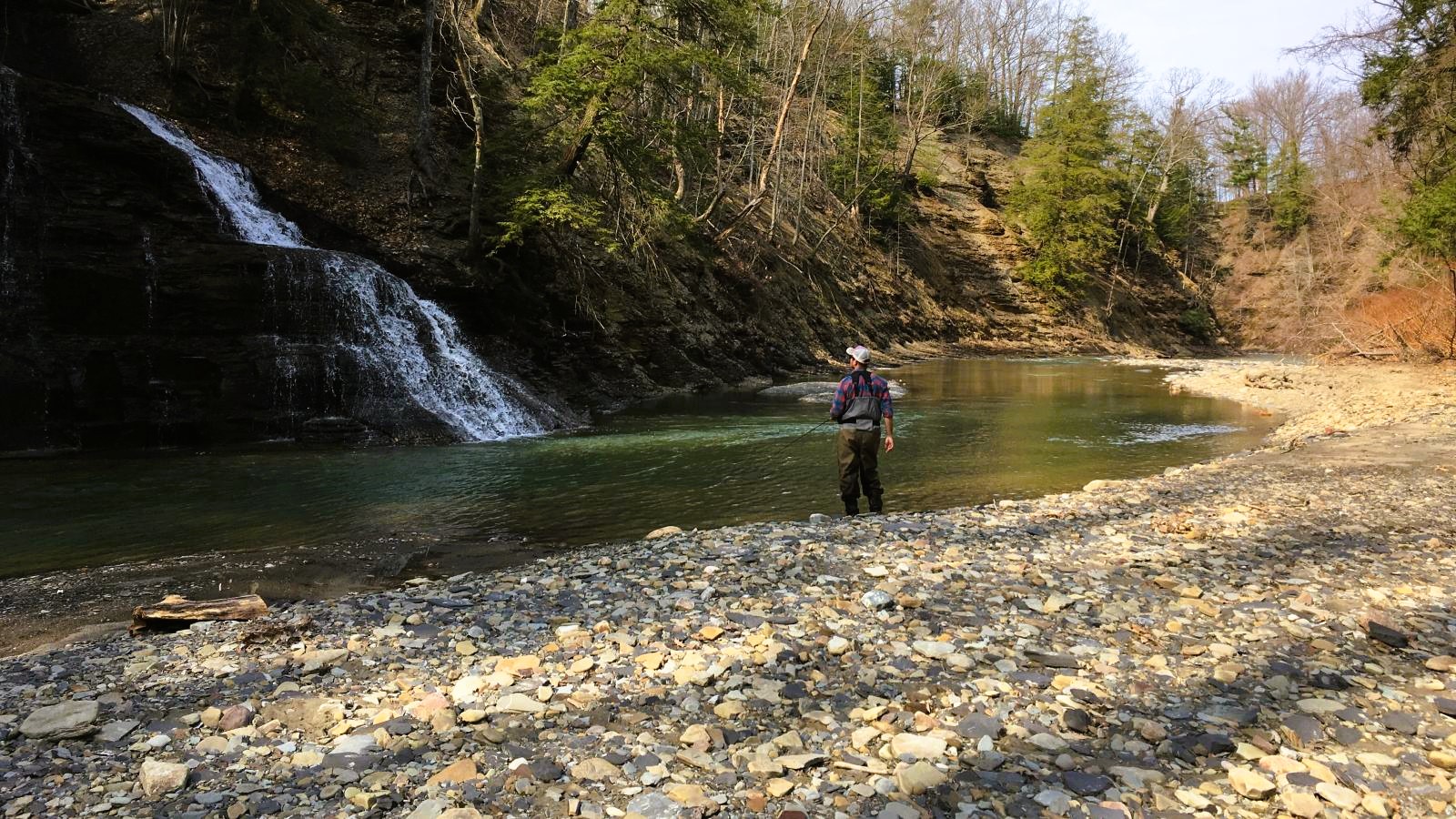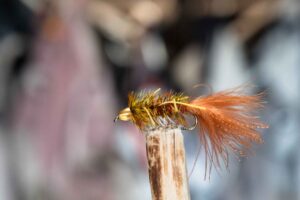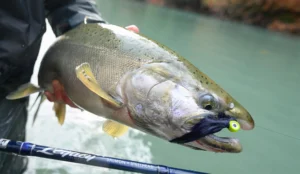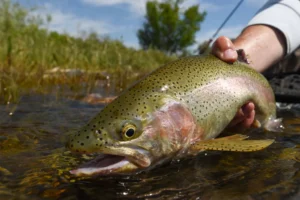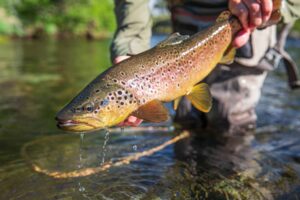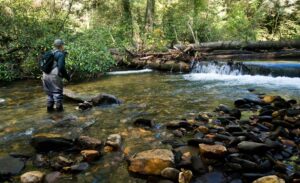Trout fishing isn’t just about throwing a line and hoping for the best. To consistently land trophy-sized fish, you need to understand the subtleties of trout behavior, the nuances of the water, and the best advanced techniques that give you an edge. Whether you’re targeting elusive wild trout in remote rivers or fishing stocked waters for high-quality catches, this guide will elevate your trout fishing game.
1. Reading Water: The Key to Trout Location
Advanced trout fishing begins with understanding how trout use the water. Trout are opportunistic feeders that seek out specific environments based on water flow, temperature, and food availability. But catching trout requires more than just finding fishable water—it’s about reading water to pinpoint where the fish are.
- Current Breaks: Trout love to hold in areas where the current slows down—these include eddies, pools, seams, and underwater structures (rocks, fallen trees, etc.). The key is understanding how water flows around obstacles and where trout will sit to conserve energy while waiting for food.
- Depth Variations: The depth at which trout hold can shift with the seasons and time of day. In warmer months, trout often move to deeper, cooler sections of rivers or lakes. During colder months, they can be found in the shallows during feeding times. For lakes, knowing the thermocline—where cooler water layers meet warmer layers—is essential for finding trout in deeper water.
- Water Temperature: Understanding temperature is crucial. Trout are cold-water fish, and they prefer water temperatures between 50-60°F (10-15°C). When water warms above 65°F (18°C), trout become sluggish and move to deeper areas. Use a thermometer to determine water temperatures and adjust your fishing technique accordingly.
2. Advanced Tackle and Gear
Using the right tackle is vital when fishing for trout. For serious trout anglers, the gear should be tailored to specific fishing conditions.
- Rods and Reels: A fast-action 4-6 weight rod is ideal for precision casting and sensitivity, especially for river and stream fishing. A reel with a smooth drag system is essential for battling strong trout. Consider a spinning reel for easier casting or a fly reel if you’re into fly fishing.
- Line Selection: For spinning tackle, use fluorocarbon line (4-8 lb test) because of its low visibility and abrasion resistance. For fly fishing, a weight-forward floating fly line will give you better control over your presentation. In deeper waters, you may want a sinking line to get your fly down quickly.
- Lures and Baits: In advanced trout fishing, presentation is everything. For spinning gear, try using inline spinners, small crankbaits, and jigs. These mimic small baitfish, which are a trout’s primary food source. For fly fishing, nymphs and streamers are often your best bet. A woolly bugger or pheasant tail nymph works well, depending on water conditions. Adjust your retrieve speed based on how active the trout are.
3. Advanced Techniques for Trout Fishing
Now that you’ve got your gear, it’s time to talk about the advanced fishing techniques that will elevate your trout game:
- Drift Techniques for Rivers: When fishing a river or stream, drift fishing is key. Cast upstream at a 45-degree angle and let your bait or fly drift naturally with the current. The goal is for the presentation to appear as natural as possible. If you’re using a fly rod, high-stick nymphing is an advanced technique where you keep the line tight and the rod high to control your fly’s drift in faster currents.
- Mending the Line: In fly fishing, mending the line allows your fly to drift naturally without dragging in the current. By lifting the line and flipping it upstream or downstream, you can adjust the drift and avoid unnatural presentation. Mastering this technique will drastically increase your hookup rate.
- Backcasting and Roll Casting: Mastering backcasting and roll casting can improve your distance and precision when fly fishing in tight spaces, such as small streams or near trees. A double haul can increase line speed and distance, allowing you to cover more ground and hit hard-to-reach spots.
- Sight Fishing: If the water is clear enough, trout can be spotted feeding near the surface. Sight fishing is a challenging but highly rewarding technique where you cast to fish you can see. Stay stealthy, make a precise cast, and watch for the strike.
- Use of Technology: In today’s world, technology can help make advanced anglers even more successful. Use a fish finder or sonar to locate deeper fish in lakes and large rivers. These tools can also help you identify the structure and temperature layers, both of which are important for trout habitat.
4. Seasonal Considerations
Trout fishing success often depends on understanding the seasonal movements of fish. Trout behavior can change drastically depending on water temperatures and food availability. Here’s how to adjust based on the season:
- Spring: During spring, trout are actively feeding after the cold winter months. Focus on shallow, fast-moving sections of rivers and streams, as the fish are more active in the shallows. Use bright-colored lures or flies to mimic the abundance of small insects and emerging fish.
- Summer: In summer, trout move to cooler, deeper water during the hottest part of the day, making them more difficult to catch. Early mornings and late evenings are your best times. Consider using a downrigger for trolling in deeper waters, or target deeper pools and shaded areas in rivers.
- Fall: Fall is one of the best times to fish for trophy trout. As the water cools, trout are actively feeding in preparation for winter. Focus on deep pools and areas with submerged rocks or logs, where they can find shelter and food.
- Winter: During the winter months, trout will often slow down, but they still feed during warm spells or just before spawning. Winter fishing requires patience, but deep, slow-moving sections of rivers or lakes can yield productive results if you target the right spots.
5. Catch and Release Best Practices
As an advanced angler, it’s important to respect the trout population and practice proper catch and release techniques:
- Handle with Care: Wet your hands before handling trout to avoid removing their protective slime. Handle them gently to minimize stress.
- Quick Release: If you’re not keeping the fish, release it as quickly as possible. Use barbless hooks or squeeze the barb to reduce injury and make the release smoother.
- Reviving the Fish: If the fish seems tired, gently hold it facing upstream and allow water to flow through its gills before releasing.
Conclusion
Mastering trout fishing is a journey, but with the right techniques, gear, and understanding of the fish’s behavior, you’ll soon be reeling in trophy trout with confidence. Whether you’re casting from a pristine mountain stream or trolling a deep lake, understanding the intricacies of trout fishing is the key to success.
With these advanced tips in mind, you’ll be well on your way to becoming a top-tier trout angler. Now, it’s time to get on the water and make your next trout fishing trip one for the books.

